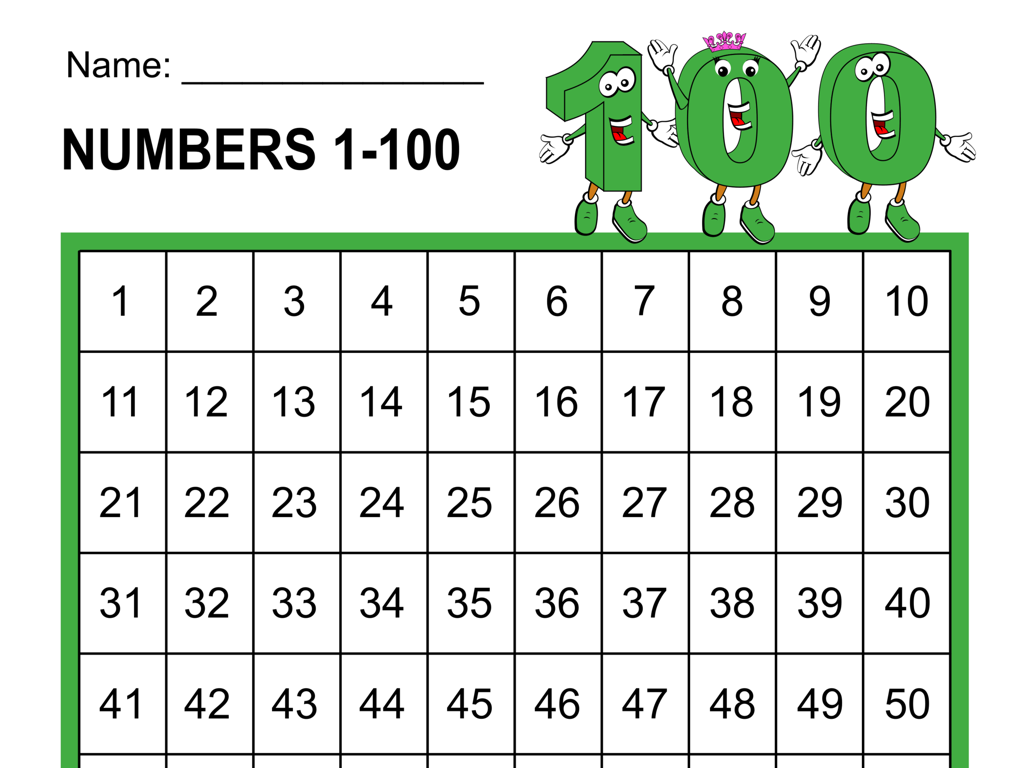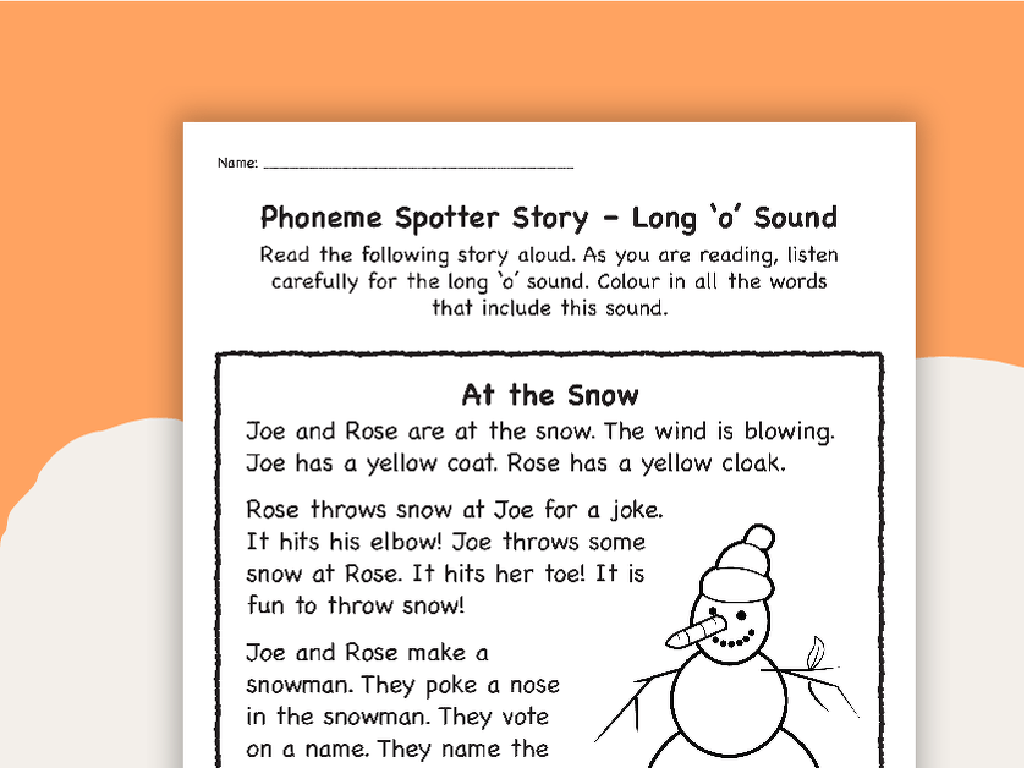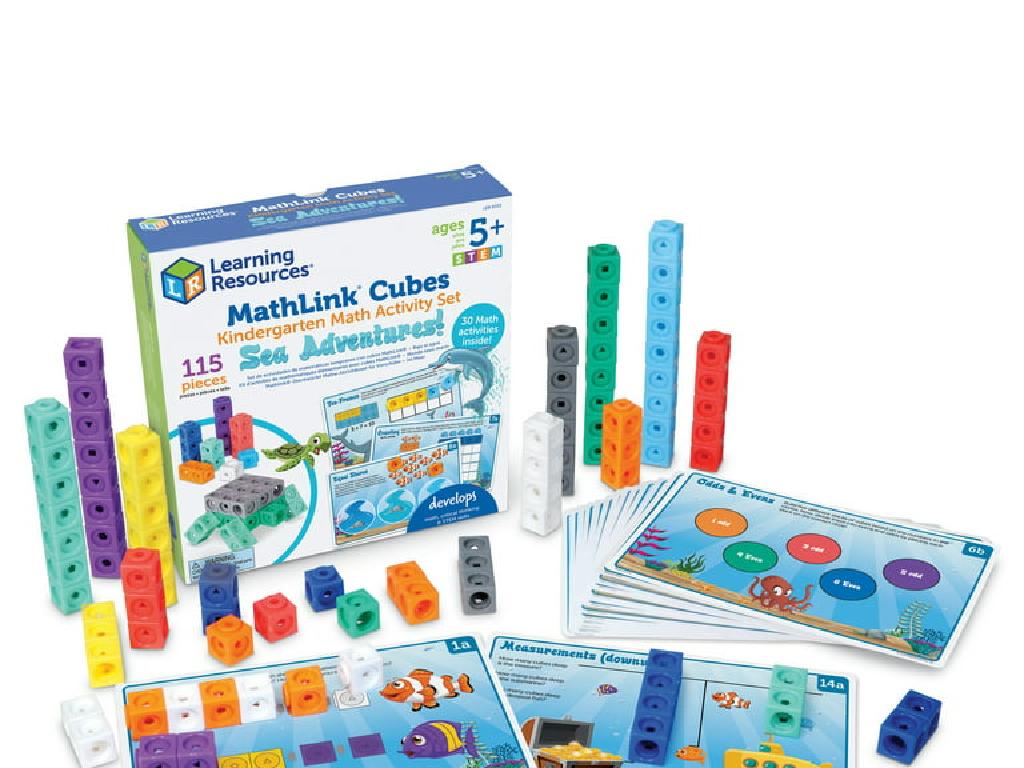Order Alphabetically Based On The First Two Letters
Subject: Language arts
Grade: Second grade
Topic: Context Clues
Please LOG IN to download the presentation. Access is available to registered users only.
View More Content
Welcome to Alphabet Adventures!
– Greetings, young learners!
– Today’s focus: Context Clues
– Context clues help us understand words
– Exploring alphabetical order
– Alphabetical order sorts words by letters
– Practice sorting words
– We’ll sort words by their first two letters
|
Begin the class with a warm welcome and an engaging introduction to the day’s Language Arts lesson. Explain context clues as hints found within text that help decipher the meanings of unfamiliar words. Introduce the concept of alphabetical order, emphasizing the importance of the first two letters in sorting words. This foundational skill aids in dictionary use and word organization. Prepare a hands-on activity where students will practice arranging words alphabetically, focusing on the first two letters to determine their order. This interactive approach will help solidify their understanding of the concept.
Understanding Alphabetical Order
– What is alphabetical order?
– It’s arranging words based on the letters of the alphabet.
– Importance of alphabetical order
– Helps us organize things and find information quickly.
– Alphabetical order in daily life
– Like in a dictionary, library, or grocery store list.
– Practice with examples
– We’ll sort words together using their first two letters.
|
This slide introduces the concept of alphabetical order to second-grade students. Begin by defining alphabetical order as the arrangement of words by the letters of the alphabet, starting with A and ending with Z. Explain that alphabetical order is a system used to organize items so that they are easy to find. Provide relatable examples such as the order of books in a library, words in a dictionary, or items on a grocery list. Engage the students with an activity where they practice arranging words alphabetically, focusing on the first two letters to determine their order. This will help them understand how alphabetical order functions in everyday life and why it’s a useful skill to learn.
Alphabet Mastery: Ordering Letters
– Sing the alphabet song as a class
– Review alphabet order
– Discuss tricky similar-sounding letters
– Letters like B and D or M and N can be confusing because they sound alike.
– Practice ordering words
– Use examples: Order ‘cat’, ‘car’, ‘can’ based on the first two letters.
|
This slide is aimed at reinforcing the students’ understanding of the alphabetical order, which is crucial for their ability to order words alphabetically based on the first two letters. Start with a fun and engaging alphabet song to refresh their memory. Then, review the order of the letters, perhaps using a visual alphabet chart. Highlight and discuss letters that have similar sounds to clear any confusion. Finally, engage the students with a hands-on activity where they practice ordering words by their first two letters, enhancing their grasp of alphabetical order. This activity will prepare them for understanding how to use a dictionary and for organizing words in writing and other language arts activities.
Alphabetical Order: First Two Letters
– How to sort words alphabetically
– Look at the 1st letter of each word, then the 2nd if the 1st letters are the same
– Examples with same starting letter
– Cat, Car, Can: All start with ‘Ca’ but have different second letters
– Practice with first two letters
– Let’s sort: ‘beet’, ‘bear’, ‘bead’. Which comes first?
– Why it’s important to learn
|
This slide introduces students to the concept of alphabetical order using the first two letters of words. Begin by explaining that words are sorted based on the alphabet, starting with the first letter and then the second if the first letters are the same. Use examples of words that start with the same letter to illustrate this point. Engage the class with a practice activity where they order a set of words by looking at the first two letters. Emphasize the importance of this skill for finding words in dictionaries, organizing lists, and in everyday life. Encourage students to think of other words that start with the same letters and how they would order them.
Let’s Practice Alphabetical Order!
– Interactive sorting activity
– Work in pairs to order words
– Help each other find the first two letters
– Discuss challenges faced
– Share difficulties in arranging words
– Reflect on the activity
– Think about what you learned
|
This slide introduces an interactive class activity aimed at helping second-grade students understand how to order words alphabetically by focusing on the first two letters. Students will be given a set of words that are out of order and will work in pairs to arrange them correctly. After the activity, there will be a group discussion to talk about any challenges they faced, which will help reinforce their understanding and provide an opportunity for peer learning. As a teacher, be prepared to assist students who may struggle with similar sounding letters or words that start with the same two letters. Encourage students to share their strategies and what they learned from the activity to promote reflection and collaborative learning.
Alphabetical Order and Context Clues
– Alphabetical order in reading
– Sorting words based on the first two letters
– Context clues find word meaning
– Clues from sentences help understand unfamiliar words
– Practice with word lists
– Use lists to find and order words alphabetically
– How context clues aid ordering
– Understanding words helps to arrange them correctly
|
This slide introduces the concept of using context clues in conjunction with understanding alphabetical order. Emphasize to students that knowing the order of letters in the alphabet helps them to look up words in a dictionary, organize their vocabulary lists, and understand the structure of language. Context clues are hints found within sentences that can help decipher the meanings of new or difficult words. By practicing with word lists, students can learn to use context clues to understand and then alphabetically order words based on their meanings and the first two letters. This skill will be practiced through engaging activities where students will identify words within a context and arrange them alphabetically.
Game Time: Alphabetical Order Relay!
– Learn Alphabetical Order Relay rules
– Split into teams for the game
– Teams quickly order words alphabetically
– Each team gets a list and works together
– Winning team orders words fastest
– Celebrate the team that finishes first!
|
This interactive game is designed to help second graders understand and practice ordering words alphabetically based on the first two letters. Begin by explaining the rules: each team will receive a list of words and must work together to arrange them in alphabetical order as quickly as possible. Divide the class into small teams to ensure everyone participates. Use a timer to add excitement and keep the game moving. The first team to correctly order their list wins. After the game, review the lists together to reinforce the lesson and celebrate the winning team. This activity not only teaches alphabetical order but also encourages teamwork and quick thinking.
Wrapping Up: Alphabetical Order
– Recap alphabetical ordering
– We learned how to sort words by the first two letters.
– Importance in reading and writing
– Sorting words helps us find information quickly.
– Share your thoughts
– What did you enjoy or find tricky about this lesson?
– Reflect on today’s learning
– Think about how you used clues to order words.
|
As we conclude today’s lesson, remind the students of the importance of understanding alphabetical order and how it applies to everyday tasks such as looking up words in a dictionary or organizing books on a shelf. Emphasize that mastering this skill will enhance their reading and writing abilities. Encourage students to reflect on what they learned and to share their experiences with the class. Ask them which part of the lesson they found most interesting or if there were any challenges they faced. This reflection will help reinforce their learning and provide valuable feedback for future lessons.
Class Activity: Create Your Dictionary!
– Make your own mini dictionary
– Add today’s lesson words
– Include alphabetical tabs
– Tabs help to find words faster
– Add new words daily
– Practice spelling and learn new words
|
This activity is designed to help students practice alphabetical order and expand their vocabulary. Provide each student with a small notebook or folded paper to create their mini dictionary. Show them how to make tabs for each letter of the alphabet along the side of the pages. During the lesson, have students write down the words they learn, in alphabetical order, under the correct tab. Encourage them to add to their dictionary every day with new words they come across in reading or in class. This will serve as a personal vocabulary builder and a handy reference tool. Possible activities include: 1) Finding words in a reading passage to add, 2) Writing sentences with their new words, 3) Drawing pictures to illustrate the words, 4) Sharing a word of the day with the class.






